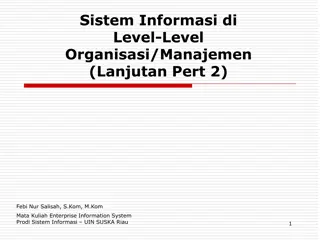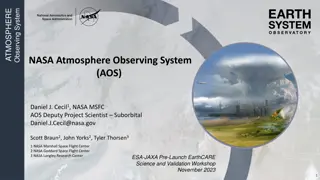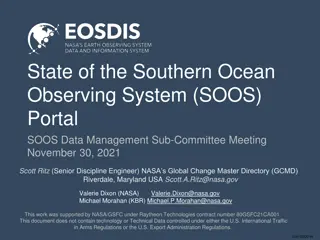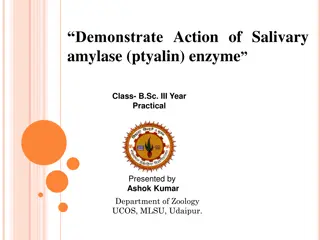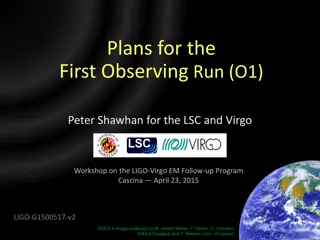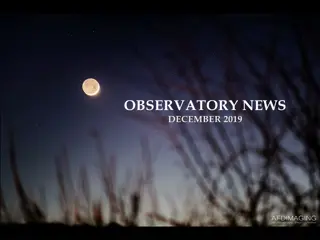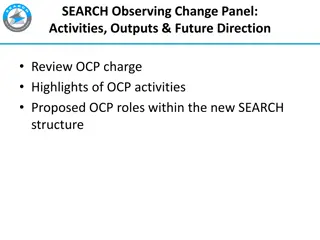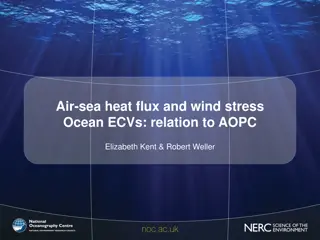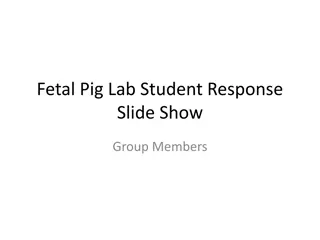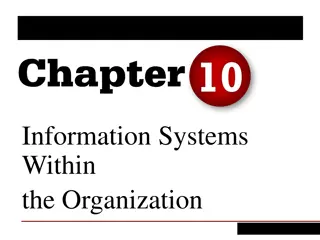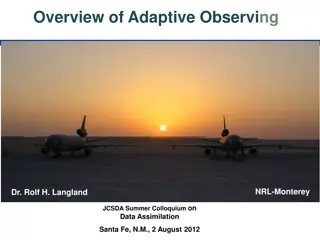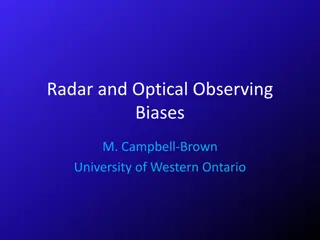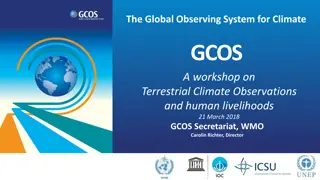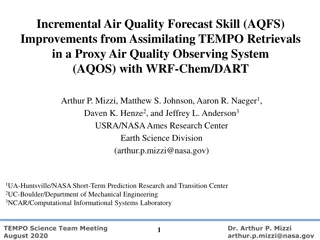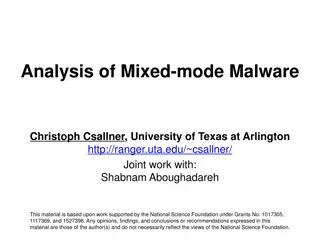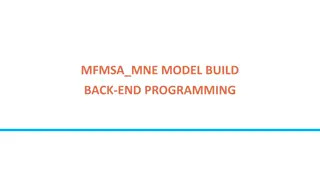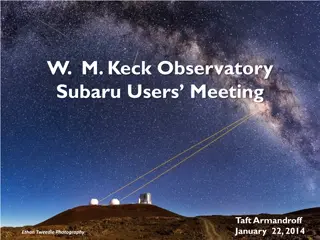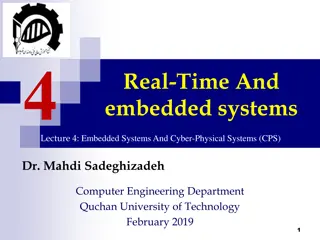Analysis of Observing Systems Impact
This information presents the impacts of various observing systems on forecast error reduction, highlighting the contributions of different satellite and in-situ observations to atmospheric modeling accuracy. The data covers the operational ECMWF system in 2008 and GEOS-5 in 2010, emphasizing the importance of soundings, radiances, and conventional data in improving forecasts for global atmospheric conditions.
Download Presentation

Please find below an Image/Link to download the presentation.
The content on the website is provided AS IS for your information and personal use only. It may not be sold, licensed, or shared on other websites without obtaining consent from the author.If you encounter any issues during the download, it is possible that the publisher has removed the file from their server.
You are allowed to download the files provided on this website for personal or commercial use, subject to the condition that they are used lawfully. All files are the property of their respective owners.
The content on the website is provided AS IS for your information and personal use only. It may not be sold, licensed, or shared on other websites without obtaining consent from the author.
E N D
Presentation Transcript
Model Adjoint Sensitivity Impacts 1
Operational ECMWF system September to December 2008. Averaged over all model layers and entire global atmosphere. % contribution of different observations to reduction in forecast error. AMSU-A: Adv MW Sounder A on Aqua and NOAA POES (T) IASI: IR Atmos Interferometer on METOP (T,H) AIRS: Atmos IR Sounder on Aqua (T,H) AIREP: Aircraft T, H, and winds GPSRO: RO bending angles from COSMIC, METOP TEMP: Radiosonde T, H, and winds QuikSCAT: sfc winds over oceans SYNOP: Sfc P over land and oceans,H, and winds over oceans AMSU-B: Adv MW Sounder B on NOAA POES GOES winds METEOSAT winds Ocean buoys (Sfc P, H and winds) PILOT: Pilot balloons and wind profilers (winds) HIRS: High-Resol IR Sounder on NOAA POES (T,H) MSG: METEOSAT 2nd Generation IR rad (T,H) MHS: MW humidity sounder on NOAA POES and METOP (H) AMSRE: MW imager radiances (clouds and precip) SSMI: Special Sensor MW Imager (H and sfc winds) GMS: Japanese geostationary satellite winds MODIS: Moderate Resolution Imaging Spectroradiometer (winds) GOES IR rad (T,H) MTSATIMG: Japanese geostationary sat vis and IR imagery METEOSAT IR Rad (T,H) O3: Ozone from satellites 0 2 4 6 8 10 12 14 16 18 Note: 1) Sounders on Polar Satellites reduce forecast error most 2) Results are relevant for other NWP Centers, including NWS/NCEP Forecast error contribution (%) Courtesy: Carla Cardinali and Sean Healy, ECMWF 2
Impact of Various Observing Systems in GEOS-5 01 Sep 31 Dec 2010 00z Total Impact AMSU-A radiances have the largest impact globally, but conventional data (raob, aircraft) still very important. GPSRO now a significant contributor. Total Impact beneficial Impact Per Observation Raobs get large weight in the analysis and have large IPO. Ship obs are few, but are located where there are few other in-situ data. Impact Per Observation 3
FSO diagnostics (Gelaro, 5th WMO Impact Workshop, Sedona 2012) http://www.nrlmry.navy.mil/obsens/fnmoc/obsens _main_od.html http://gmao.gsfc.nasa.gov/products/forecasts/syste ms/fp/obs_impact/ Much larger relative impact of AMVs in Navy system compared to NASA s. Note that IASI has moved up in NASA system compared to 2010 (previous slide), and GPSRO has moved down as COSMIC ages/degrades. 4
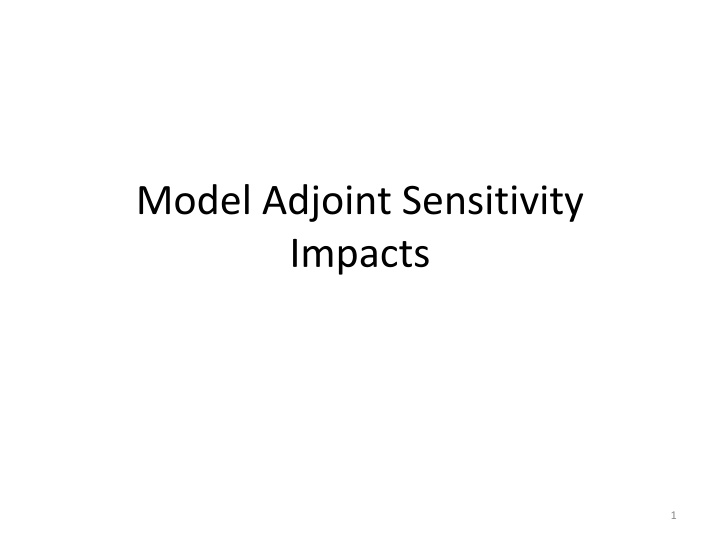

![[PDF⚡READ❤ONLINE] Solar Surveyors: Observing the Sun from Space (Springer Praxis](/thumb/21536/pdf-read-online-solar-surveyors-observing-the-sun-from-space-springer-praxis.jpg)

